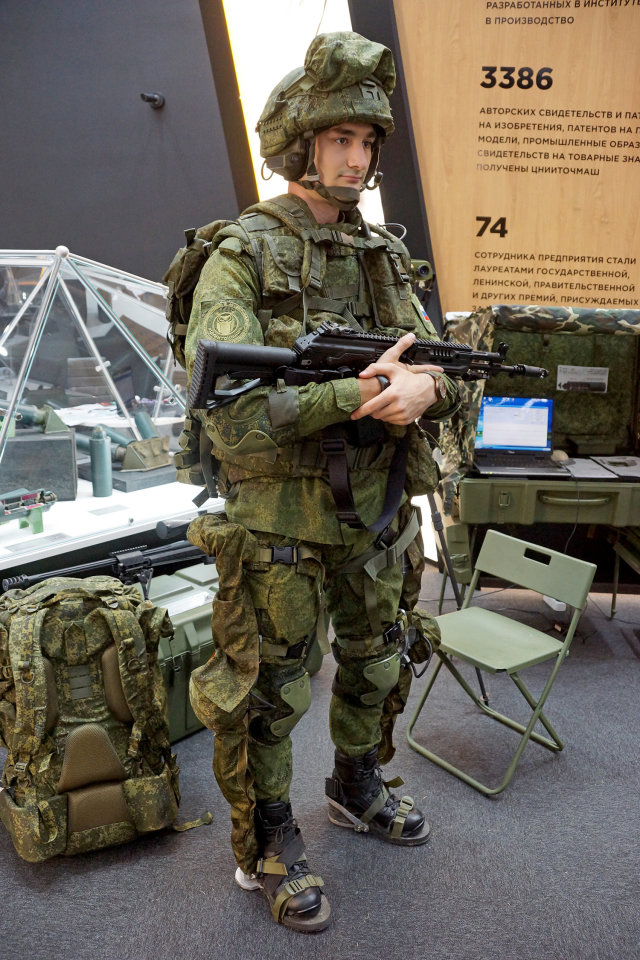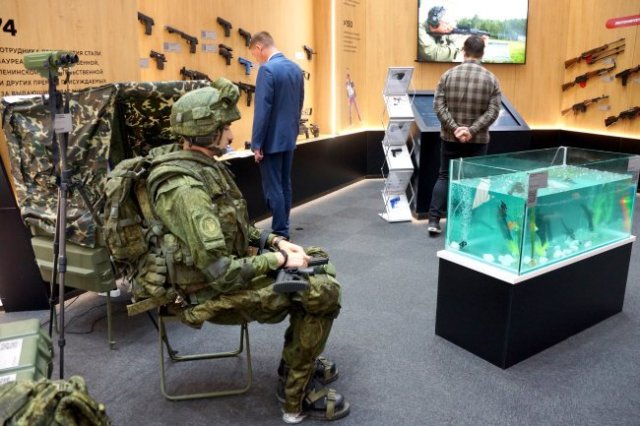Specialists of the Rostec state Corporation have created a unique combat exoskeleton, equipping it with electric motors. The first prototype of such an exoskeleton can be part of the equipment of a soldier of the future.
"The latest esoskeleton works in two modes. At the same time, in the active mode, the physical capabilities of a person are enhanced by servos - gearless electric motors running on batteries. This mode is activated when the soldier moves over rough terrain or mountains. In the passive mode, the exoskeleton can be used for movement on a horizontal surface with a load, " RIA Novosti reports with reference to Rostec (within the framework of the Army-2021 forum).
It is explained that passive exoskeletons are not equipped with engines, but due to their mechanics they reduce the load on the musculoskeletal system of the fighter and allow him to carry large loads over a longer distance on a flat surface.

"The exoskeleton, which we are creating together with colleagues from the Lomonosov Moscow State University Mechanics Research Institute, reduces the load on the musculoskeletal system by 50 percent, energy costs when running and walking-by 15 percent, allows you to carry up to 60 kg of cargo and shoot automatic weapons 20 percent more accurately, "said Bekhan Ozdoev, industrial director of the cluster of weapons, ammunition and special chemicals of the Rostec State Corporation.
It is noted that the servos of the exoskeleton are equipped with positional sensors, as well as pressure sensors in the feet. Due to this, the exoskeleton adapts to the characteristics of a person, does not restrict his movements and allows him to move intuitively.
According to Vladimir Budanov, head of the Laboratory of General Mechanics of the Lomonosov Moscow State University Research Institute of Mechanics, in the future it is planned to introduce composite elements into the design of the exoskeleton, as well as focus on improving the batteries and control system.
Representatives of Rostec also said that Russian military sappers are successfully using passive exoskeletons in Syria. "In addition to increasing the capabilities of a serviceman, the combat potential of the entire unit increases many times. This is evidenced by the experience of combat use. For example, sapper units equipped with passive exoskeletons are already operating in Syria," the press service of the state corporation reported.
Ivan Petrov

